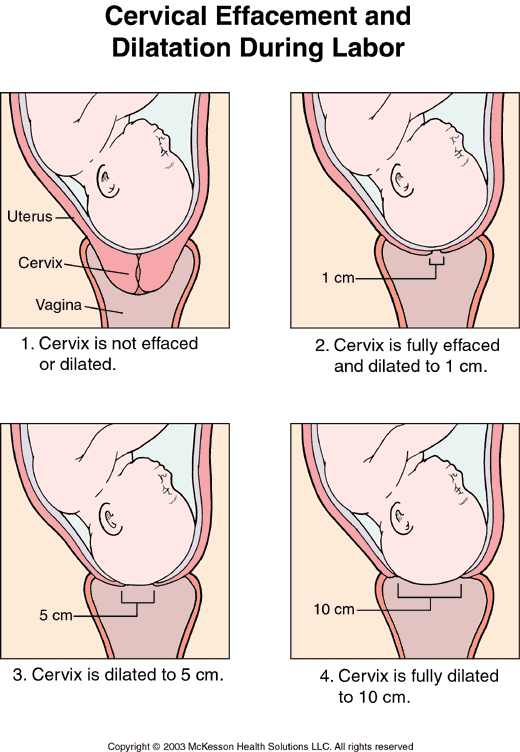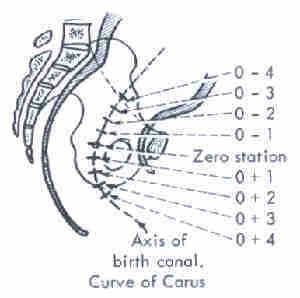What is the point of a vaginal exam during labor? In a typical hospital birth, labor is "supposed to" follow a pattern, called Friedman's Curve. Here is a chart depicting what is expected of a laboring woman's cervix:

This typically equates to the cervix opening about 1cm an hour. And so, dilation is usually checked about every hour, to make sure a woman is following the curve. If they are not, their labor is labeled "dyfunctional" and often, pitocin is used to augment labor. If that doesn't work after a few hours, this is where the diagnosis "failure to progress" comes in and a cesarean is performed.
The problems with this? There are many. The most glaring being that Friedman's curve is based on averages. What do we know about averages? That they are the mean, that there are normal labors that are shorter and there are normal labors that are longer. It is ridiculous to put a time limit on a physiological process, as long as mother and baby are doing well. It is based on the idea that Birthing Woman are Machines.... if the Machine doesn't dilate X number of cm in X amount of time, the Machine is dysfunctional and we try to "fix" it. If the Machine won't be fixed with pitocin, it must be broken, so let's open it up and do a baby extraction.
So many things are involved in birth, the position of the baby, the strength of the contractions, the mother's comfort and mental readiness for birth. Because the medical establishment likes to believe that the mind and body are separate, it completely discounts that if a woman is uncomfortable in her surroundings, her labor will not progress smoothly. But we are mammals. Most mammals make their nest and need darkness, privacy and quiet to birth. If they are disturbed, labor stalls. Humans are the only mammal that make their nest and then leave it to give birth. It is no wonder labor often slows down once a woman gets to the hospital (or when the midwife arrives at the home in some cases), the mammal part of her says, "New environment, people poking me and asking me questions, not a safe place/time to birth"
The physical aspect of it is that it can be, and often is, very painful. During a time when a woman's body is trying to open up and push down and out a baby, fingers up into the vagina are invasive and counterproductive. In addition, the more vaginal exams, they higher the incidence of infection, especially if the water is broken. If the bag of waters breaks before labor starts, one of the most harmful things a care provider can do is a vaginal exam. As long as things stay out of the vagina, the risk of infection is minimal, but as soon as anything foreign is introduced (sterile gloves included), the risk goes up.
The psychological aspect of vaginal exams during labor is that they can be extremely discouraging if things are not progressing "normally" The language used during vaginal exams is often negative... only 3, just 7, not quite 10 cm. And let's go back to the fundamental truth about vaginal exams that we discussed last post: They only tell what the cervix is doing at that moment. There is no accurate predictor of how long the rest of labor will take. It is entirely possible to go from 4 or 5 cm to complete and pushing in a matter of minutes. In the absence of an actual problem (and a long labor is not a problem) it is a completely pointless procedure.

